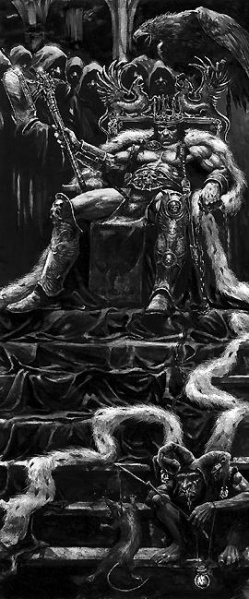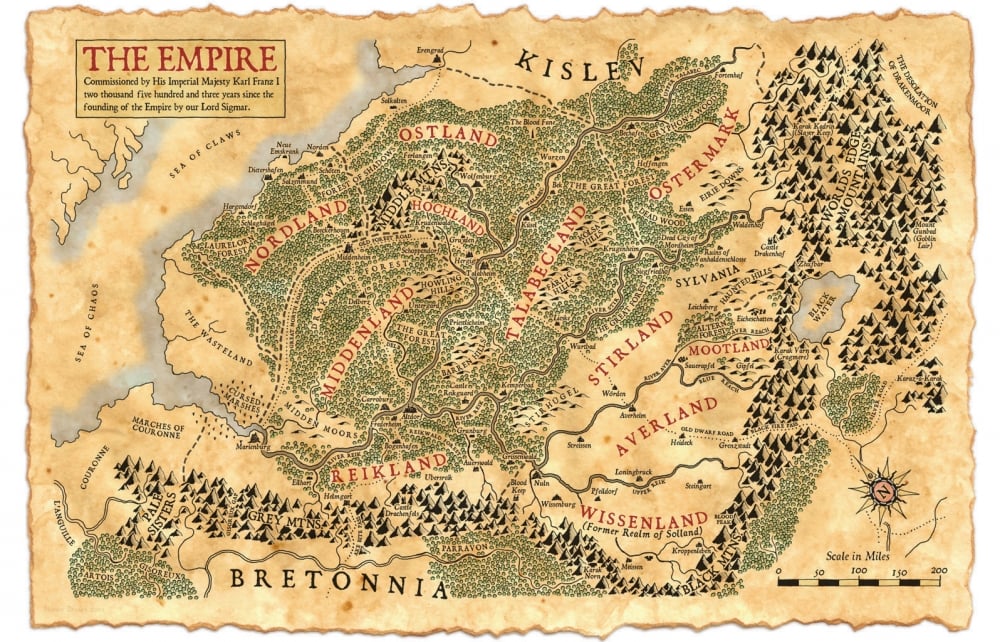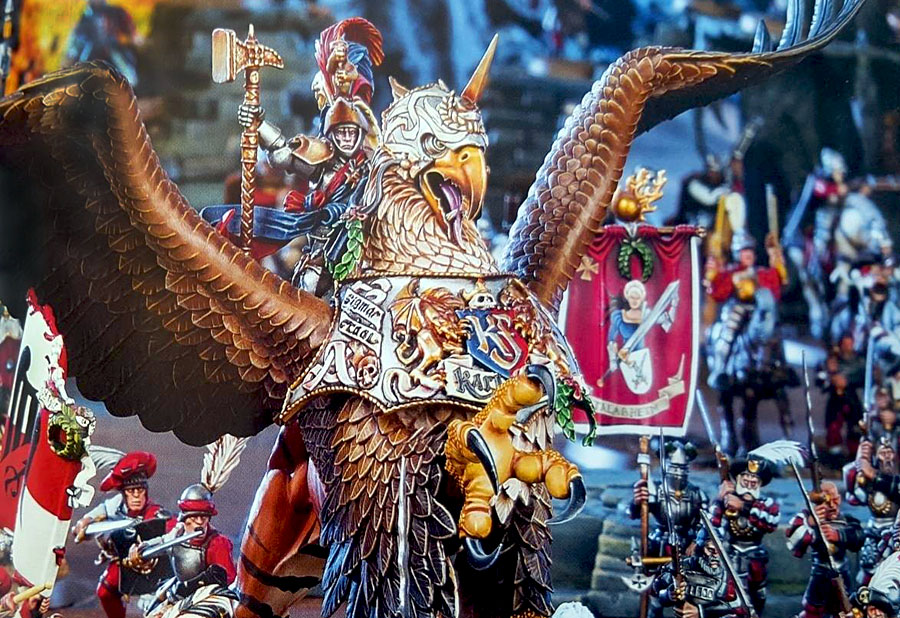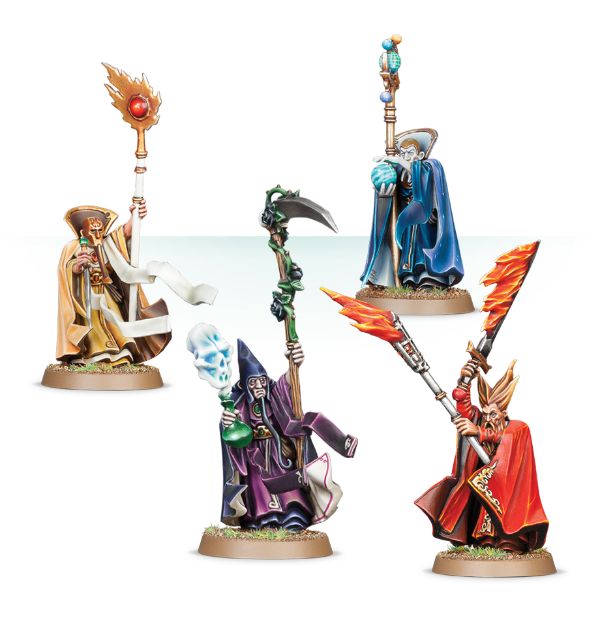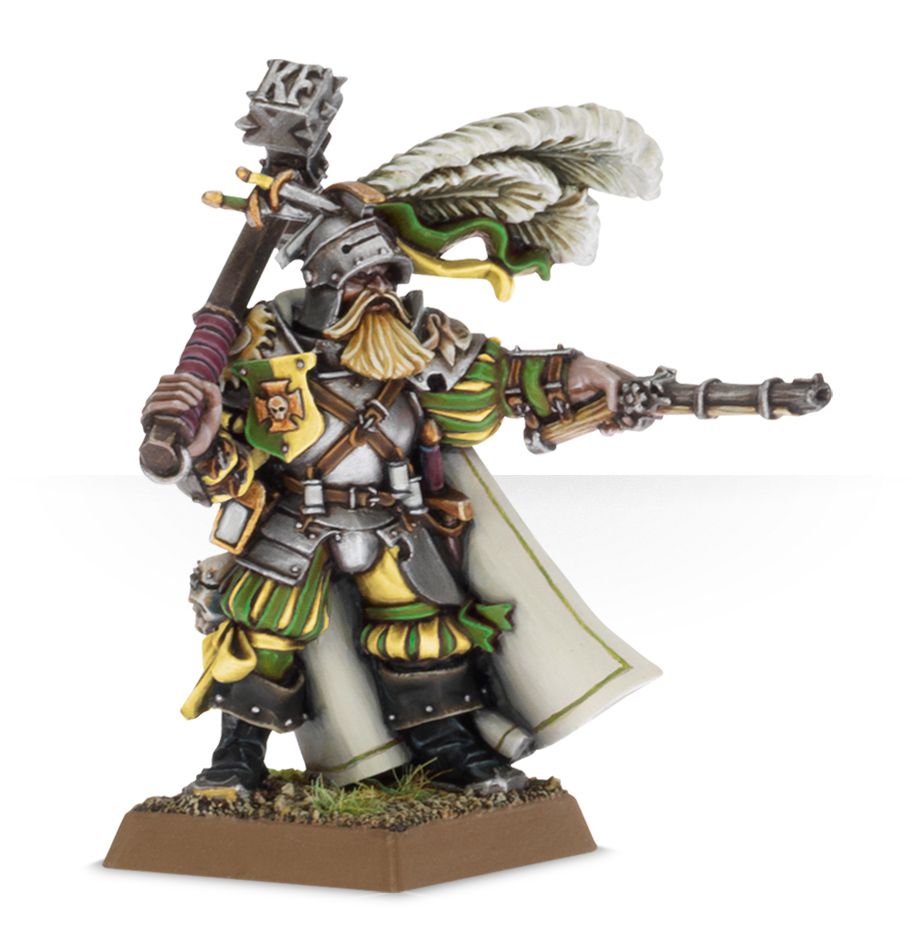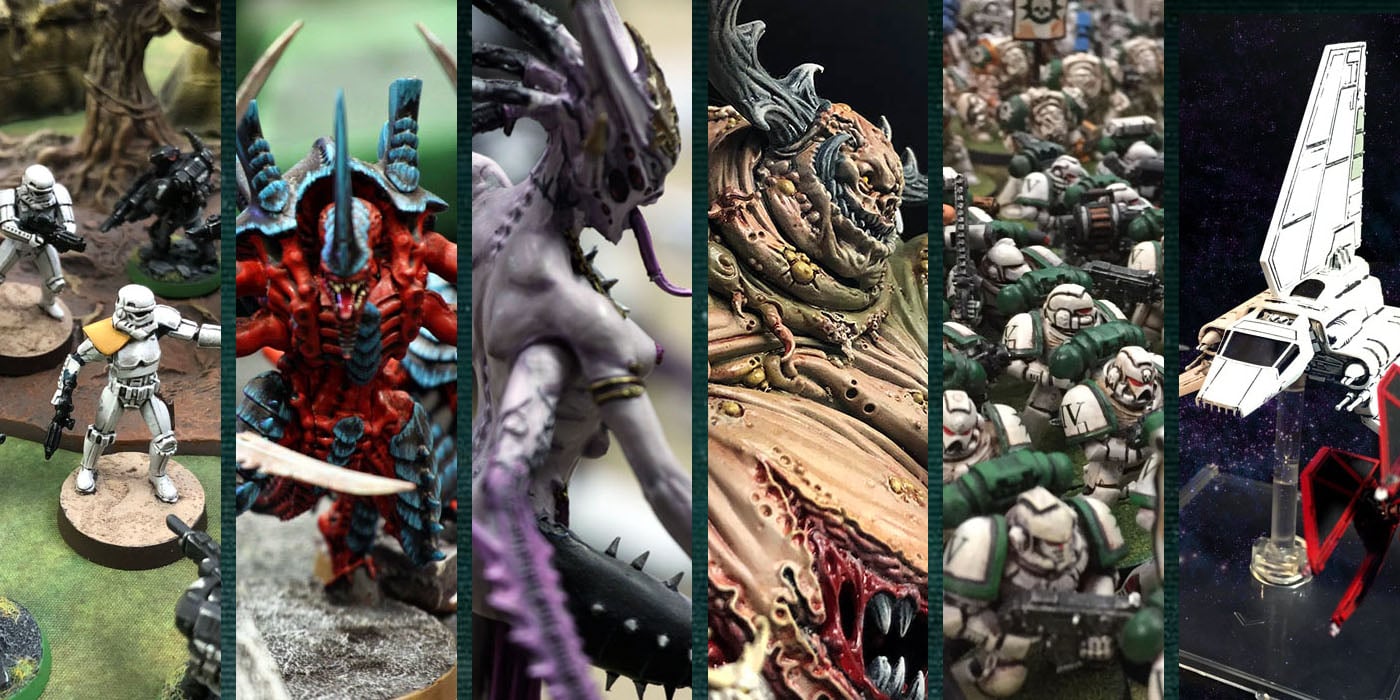Warhammer Loremasters: The Empire
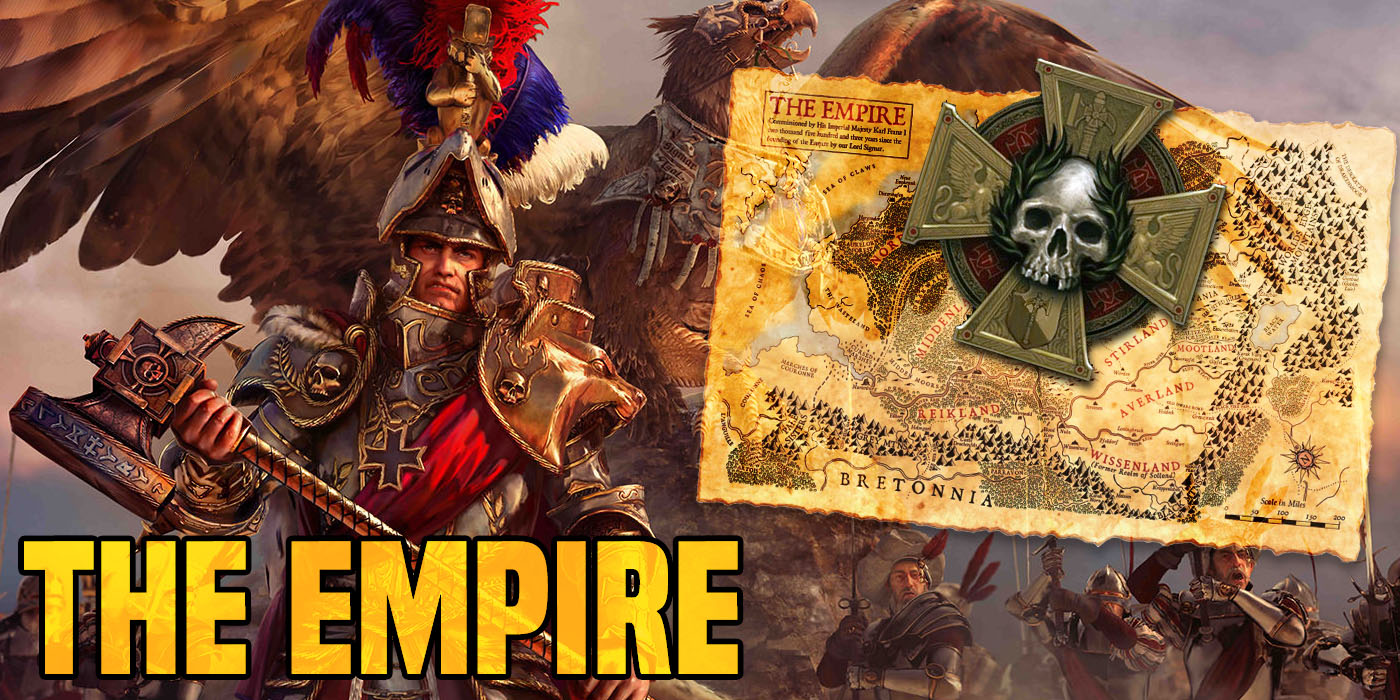

With Cities of Sigmar just around the corner, let’s return to the World That Was and explore that great lost beacon of humanity – The Empire.
The Empire is the largest and most powerful nation of the Old World. It is located east of Bretonnia, south of Kislev and north of Tilea. The current Emperor is Karl Franz, who was elected and crowned in 2502 IC.
History of The Empire
The Empire was founded by Sigmar of the Unberogen tribe, a very charismatic and powerful barbarian warlord.
Sigmar was the son of the tribal leader of the Unberogen, Bjorn. At a young age Sigmar saved the dwarfen king Kurgan from a greenskin raiding party. The king gifted the tribe with Ghal-Maraz, or “skull splitter”. This mighty warhammer was to become the symbol of all Sigmar and his Empire was to stand for, and the source of his power.
Previously, the land was inhabited by many primitive tribes such as the Unberogen, Teutogens, Jeutones, Ungols and Bretoni. The tribes were often at war with one another, raiding for anything they needed or just to establish their power in the region. Sigmar’s father Bjorn had already forged strong links with nearby tribes, but to unite the tribes under one banner was unprecedented and many feared it was an impossibility.
Establishing a powerful alliance with the Dwarfs, Sigmar began a quest to do exactly that. He travelled the Empire with his closest friends and his army, aiding tribal warlords in defense of their people and earning their trust. One by one, the leaders of the tribes pledged their support to Sigmar and the Unberogen.
Several tribes refused to join Sigmar, or were openly hostile and threatened open war with the Unberogen. The tribe of Bretoni decided to migrate to the west, eventually settling. These people, united in a similar way under the leader Gilles Le Breton, would eventually found the nation of Bretonnia. The Teutogens and their leader, Artur, and had terrorised neighbouring tribes, murdering and destroying. Artur believed in individual strength and the old ways of the tribes, and would not bow to any man.
Sigmar set out to challenge Artur. He climbed by hand to the top of the mighty rock Fauschlag, where the Teutogen camp lay, and fought Artur to the death. The Knights of the white wolf pledged from then on to serve Sigmar as his personal guard.
Having successfully earned the trust, respect and allegiance of the main tribes of the lands, Sigmar set out to Black Fire Pass, to await a massive greenskin horde that approached from the south. With aid from his allies the Dwarfs, and all of the tribes, Sigmar smashed the army, pushing the Greenskins back from the lands that would become the Empire ensuring security for many years to come.
Following the victory, Sigmar was crowned Emperor of the lands from the Worlds Edge mountains in the East, to Kislev in the north, The Black Mountains to the South and the Grey Mountains in the West. Alaric the Mad, a Dwarf runesmith, began to forge 12 great Runefangs for each of the tribal leaders that would become the Elector Counts. At this point, the Imperial Calendar begins, at year 1.
After 2500 years, the Empire still stood, the greatest and most powerful realm of the Old World.
Government
Although the Emperor is both head-of-state of the Empire and commander-in-chief of its armies, the real power within the Empire is held by the 10 Elector Counts, of which the Emperor is one.
Upon the death of an Emperor the throne does not automatically pass to his heir. An election is held by 15 Electors, 10 of which are Elector Counts. Each of them casts a vote, and the candidate with most votes becomes Emperor.
The Emperor is largely the leader of the Elector Counts, who are extremely powerful and independent. His power is severely limited by the inability to enforce his edicts within the semi-independent provinces, where the Elector Counts can effectively choose to largely ignore them.
A wise emperor realises that trying to subdue the Elector Counts through force and/or threats is a very dangerous errand, which all too easily ends with open rebellion and civil war. Gaining their respect and loyalty through example and fair leadership tends to be the best solution.
Organization
The Empire is not a centralised nation, but rather a feudal confederacy of 11 large and semi-independent provinces, bound together by common interests, history, language, religion, and culture.
Somewhat outside of the rule of the nobility are the semi-independent city-states. There the burghers choose their own Burgomeisters. It is likely that the richest and most influential merchants have the greatest influence over the whole process but precise details are currently unknown.
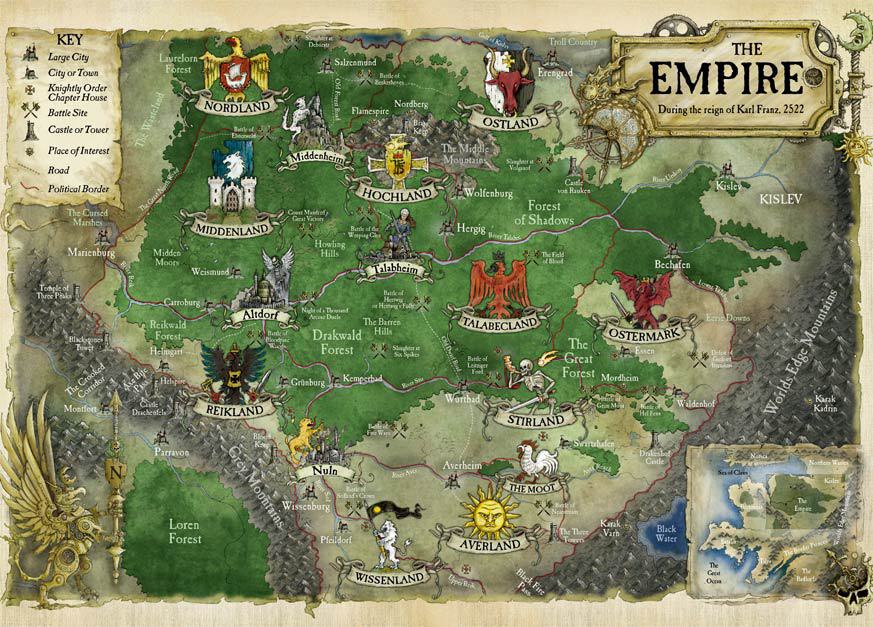 Provincial Symbols of The Empire
Provincial Symbols of The Empire
Provinces of the Empire
- Averland
- Hochland
- Middenland
- Nordland
- Ostermark
- Ostland
- Reikland
- Stirland
- Talabecland
- Wissenland
- The Moot (technically not an elector state)
City-states
- Altdorf – capital city of Reikland, and notional capital of the Empire
- Middenheim – capital of Middenland
- Nuln
- Talabheim – capital of Talabecland
Population
The overwhelming majority of the citizens of The Empire are human but Halflings, Dwarfs, Elves, and Ogres are present.
Magic
The Empire has the 8 Colleges of Magic which, in exchange for suitable fees, teach and train powerful Wizards. The colleges were founded by High Elf LoremasterTeclis at the request of Emperor Magnus the Pious. The Wizards provide valuable magical support and protection for the armies of the Empire. Nevertheless the majority of the common people see Wizards with more than a little amount of unease, fear and suspicion.
Religion
Nearly all deities of the Old World pantheon are openly worshipped and accepted. Sigmar, Ulric, Taal and his wife Rhya, Shallya, Morr and Ranald are the most popular ones.
Military
The Empire boasts the most powerful military in the Old World, composed primarily of a standing army of professional infantry regiments. Each Grand Province and City-State of the Empire is responsible for the creation, training, and provision of its own army. These provincial armies are supplemented in wartime by the Empire’s various independent military, religious, and magical organizations.
The armies of the Empire are massive and diverse fighting forces, having a wide range of available units while the Imperial Navy patrols the mighty rivers of The Empire besides protecting the northern coast of Nordland.
Each of the Elector Counts, including the Emperor, maintains their own standing armies, called State Troops, which are largely composed of infantry. These forces are supplemented during war by various forms of militia, such as peasant levies and mercenary bands. In addition to these forces are the various secular and religious Knightly Orders which will form most of the cavalry.
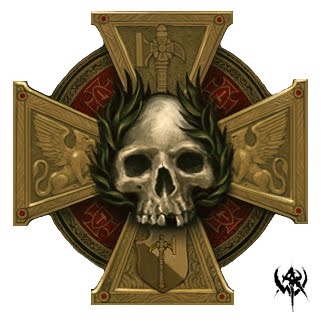 Learn More of the Military of The Empire
Learn More of the Military of The Empire
Lexicanum
~ Lost to the mists of time, yet there who say you can still find the heroes of The Empire serving Sigmar amongst his Stormcast Eternals to this day.

